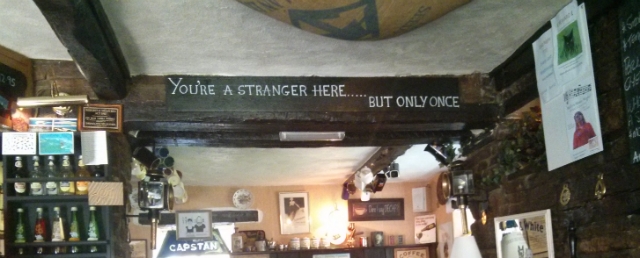Not long ago I was faced with the challenge of explaining what is Web Analytics to someone that has no idea what is Internet. After thinking for a while I came up with a metaphor that I think could be interesting to share.
Suppose you own a restaurant in a highway rest area. You want to understand how your visitors behave and how to optimize the restaurant to better serve your them. In order to do that, you decide to stand in the door for a full week, count how people interact with it and write it down on a paper.
You might be surprised, but that’s what Google Analytics does, in a somewhat larger scale! Why? Well, in this case you are the analytics tool as you are counting and reporting on what’s happening, who is coming, who is leaving and which transportation vehicle they are using. The restaurant is the website, where the visitors are supposed to make a transaction or complete a task.
Just like in a website, people use some kind of vehicle to arrive at the store. But instead of Browsers and Operating Systems, the restaurant will have people coming using automobiles, motorcycles and trucks from different brands. And why is this information important? For example, if you notice that motorcycles just won’t stay at your restaurant you might find out that there is not a comfortable place for them to park.
Hint: take a look at these reports to check how your mobile traffic is performing.
And just like in a website, there are several tasks people might want to perform in the restaurant: eat, drink, rest, use the toilet. And if you realize this is the case, you won’t try to sell cheeseburgers to people that just want to go to the toilet… you better spend your efforts providing a better toilet experience for them!
Hint: use Personas to help differentiate between types of customers.
You could test different types of slogans and designs in the welcome sign and see which one brings the highest number of customers. You could make your line more efficient and train your employees to use the cashier in a better way. You could test different in-store promotions or payment methods. You could just change the colors and designs of the tables, who knows what influence your customers?! Here are some redesign ideas from the $1 Billion revamp McDonalds did to its stores…
Hint: are you using Google Analytics Content Experiments? You should!
I think you get the idea… it is pretty similar, isn’t it? Do you have a good metaphor to explain what is Web Analytics to your less tech savvy friends? If you do, please share in the comments.
Bonus: here are some additional funny examples of how Analytics would look like in real life.
You Are A Stranger Here… But Only Once
This reminds me of a very small pub by the road in South Wales. It is not techie in any way, but I think they grok a very important lesson that many online marketers don’t; and they have it hanging on the wall:

When I read this phrase I couldn’t stop thinking that this is what Web Analytics is all about: getting to know people from the very first time they visit the website. For obvious reasons, you will always be a stranger during your first visit, but not in the second.
In you second visit I should know where did you come from, which pages you visited, how long did you stay during the first time and, maybe, I will even have your name (in case you filled a form)!
But why so few websites use the information they gather during the first visit to greet us on our second visits? (The grocery store owner close to my house started greeting me by my name after the second or third visit to his store.) The answer is that it is not that simple, it requires a lot of thinking and a little bit of development.
One relatively simple technique that can make your customers feel more comfortable in the website is to allow them to sign in using their preferred social network. This will allow them to see what their friends like in the website and to auto-populate their information in comment fields. Even though you won’t be using the information left by the visitor to its full potential, you will at least make them feel better, which is a great start.
Take a look at the Facebook login, Twitter Sign In and Google Sign In buttons, those are the larger ones. They will help you get up and running with personalizing the website by using existing platforms. Here is a quick intro by the Google+ team on the value of using its button.
What do you think? How do you greet your online customers? Leave a comment…








